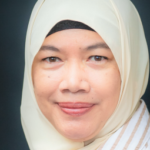With a high number of countries closing learning institutions to face the COVID-19 pandemic, over 80% of the world’s students are not attending school. As a response to this challenge, many educational institutions are increasing their efforts to utilise educational technologies of all sorts to provide remote learning opportunities for students, while schools are closed. To help parents, teachers, schools and school administrators facilitate student learning and provide social care and interaction during periods of school closure, UNESCO elaborated a list of educational applications, platforms and resources. Although these solutions offer essential support to society in these unprecedented times, they are mostly oriented in enabling theoretical content transfer. One of the biggest drawbacks of the majority of these existing solutions is that limited support is provided for hands-on laboratory work and practical experiences. Hands-on experiences are essential to significantly advance learning at all levels of science education and across all disciplines. However, this is even more relevant to science, technology, engineering, and mathematics (STEM) departments, which must continuously develop their laboratories and pedagogical tools to provide their students with effective study plans. The creation of content accessible on-line and the possibility of providing an immersive experience for lab activities is clearly useful in the short term to face COVID-19-related issues but may open to the adoption of novel tools for e-Learning also in the long term.
The main objective of AugmentedWearEdu is to introduce a novel framework for e-Learning consisting of including haptic experiences to enable digital access to laboratories in higher education. This will be achieved by combining both virtual reality (VR) and augmented reality (AR) tools with a novel generation of wearable haptic devices. This will make it possible to engage students in a hapto-audio-visual hands-on laboratory environment. In this project, we will evaluate which of the available haptic technologies are suitable for e-Lerning and may foster the student’s ability to create complex simulations using existing or in-world modeling techniques and scripting tools, while offering the functionality to link to the real world and capture data which can be visualised in real-time. Haptics, VR and AR tools will be adopted either from our ongoing research activity or from various low-cost commercial off-the-shelf (COTS) tools. In this way, an innovative educational and research loop will also be established. This approach will contribute towards the achievement of fully-immersive, open and distance laboratory learning.
Starting from current state-of-art knowledge, AugmentedWearEdu will further advance this knowledge by producing the following intellectual outputs:
- assessment tool for educators’ competencies evaluation on using VR/AR including wearable haptic technologies. We propose a self-assessment tool for educators’ competencies evaluation in VR and AR including haptic wearable technologies. This tool will support academic staff in taking responsibility for their own professional growth through the identification of the current status of their pedagogical and technological skills with respect to VR/AR and integrated haptic wearables. The proposed tool will make it possible to design tailor-made courses for educators. From a methodology perspective, this is expected to also impact other disciplines in higher education. This is aligned with the European Commission’s guidelines on supporting teacher competence development for better learning outcomes;
- training program for educators on haptics, VR and AR competencies development (methodology and tools). We propose the design of a training program for educators regarding competence development and the adoption of haptics, VR and AR as tools for realising a hands-on laboratory with practical experiences for students. The development of the proposed training course for the integration of haptics, VR and AR for teaching is a novel methodological contribution toward supporting teacher competence development;
- open source library of VR, AR and wearable haptics to be used for re-designed study modules and engineering laboratories. We will deliver a website that will be called AugmentedWearEdu Portal. The portal will be an initiative to advance the design and use of VR/AR content including haptic interaction for e-Learning. We will include in the portal all the information needed to build and set up the proposed wearable haptic interface starting from off-the-shelf components and our current research prototypes. The combination of VR/AR methodologies and haptics can be exploited beyond engineering courses. Medicine courses, arts and other courses where lab activities are envisaged may take advantage of the proposed novel methodologies.






